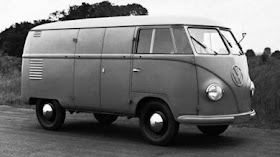
This small Baltic state had a rocky ride through this period. In the early 2000's things were booming and spending reflected that. As a global recession hit, car buying was understandably affected. In 2007, new car registrations exceeded 31,000 units.
In 2008, the numbers dropped 22% to 24,600. The top 25 for that year are to the right. Japanese brands were the most popular. Toyota led the total market with 3,100 sales, Honda was next at 2,350 and Volkswagen at third with 1,750 registrations.
Mazda was fourth in total and had the leading model, the 6 exceeding the 1,000 mark. Citroën was the fifth most popular brand, followed by Škoda, Nissan and Ford. Hyundai and Kia rounded out the top ten.
Toyota had an impressive five models making the list and Honda three. Despite Volkswagen doing well overall, it only had the one model in the top 25.
The question on everyone's mind at time would have been how will 2009 fare with the world economies in such turmoil?
As we all now know, the news wasn't good. In Estonia, registrations slumped 67%! The best selling model was doing half of what was the case a year earlier.
In times of change, rankings can be volatile but at the top at least Toyota remained #1 with an increased share of the total market. Renault went from twelth to second with the Mégane now the best selling model.
Volkswagen held on to third place in the brand rankings with the Golf/Jetta, Passat and Tiguan all in the top 25.
Elsewhere, Honda slipped two pacings to fourth Mazda dropped from fourth to tenth. Peugeot came back from the nineteenth to eighth. How would 2012 go?
The worst of the economic meltdown was over and 2010 was the start of better things. Total registrations were up 29% to 10,300 with Toyota still top but Škoda had moved into third place and looking good.
Renault held onto second in brand ranking and still had the top model. The Škoda Octavia and Fabia had useful gains, the latter moving into the top ten for models.
The Volkswagen brand dropped from third to seventh and again only had one top 25 model. Nissan was tenth but the Qashqai was doing so well, it accounted for 3 out of every four cars sold under that logo.
In 2023, sales will be over 22,000 and well ahead of the 2010 but not quite up to the 2008 figure. That's a good thing if it's now at a more sustainable level.
Data source: Transpordiamet. Photographs: Netcarshow.

















